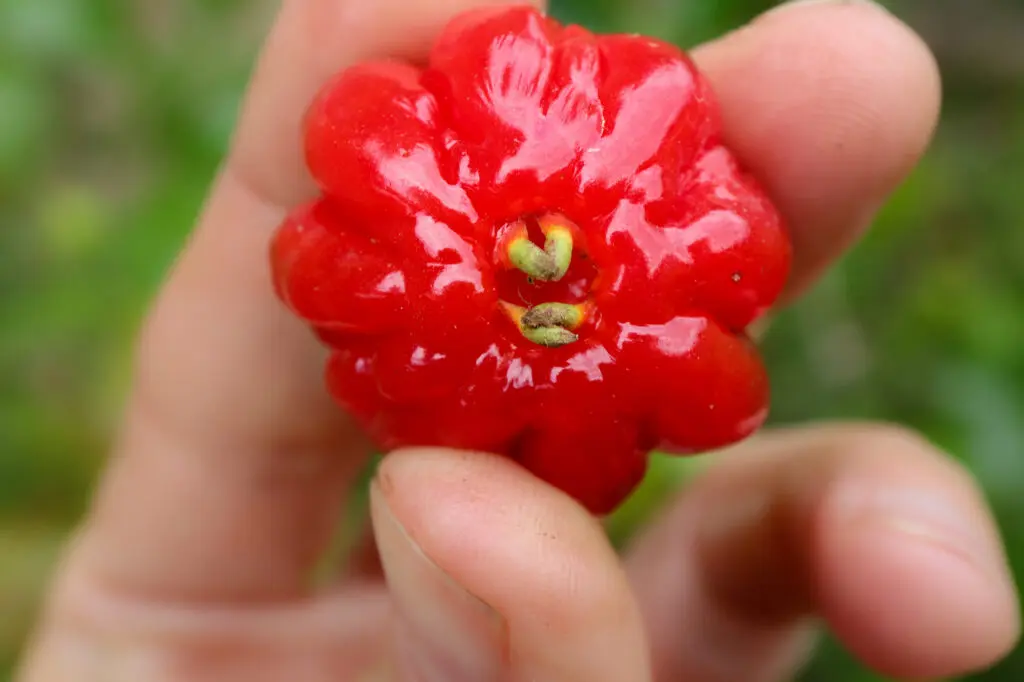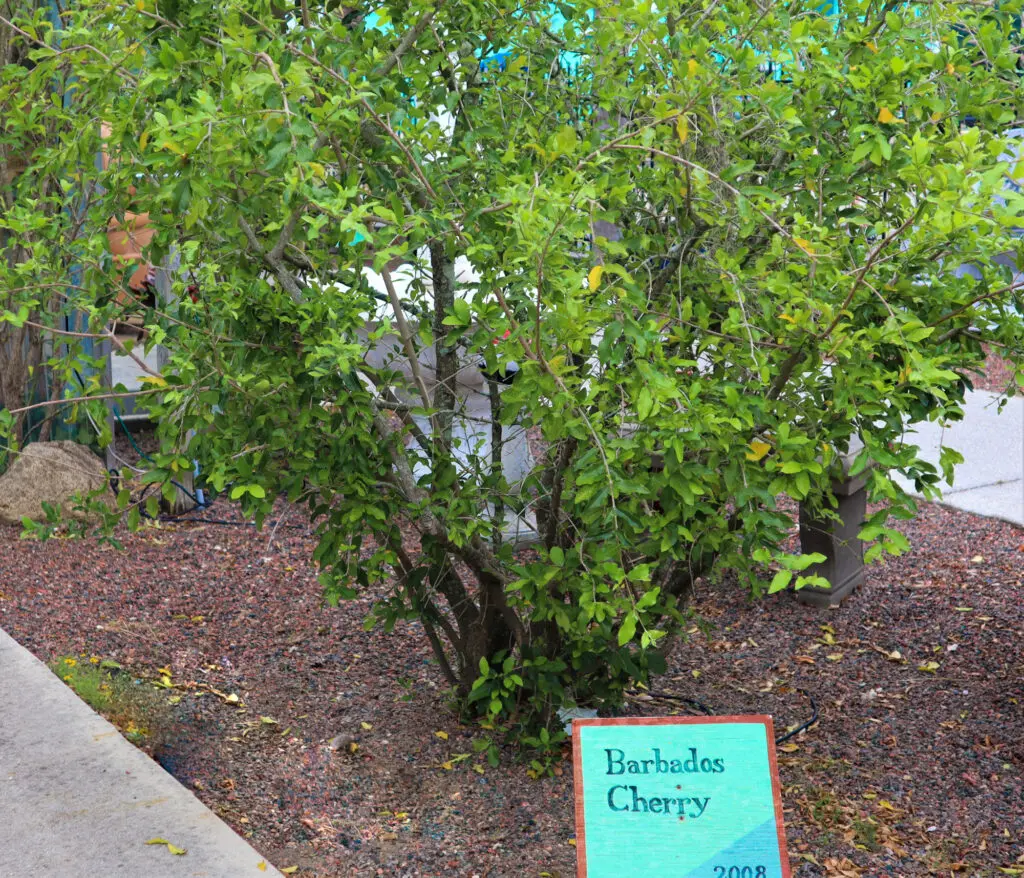by Amanda Rose Newton
Florida is a paradise for growing all kinds of delicious fruit, but there are a few that require more chill hours than the state can routinely give.
Sadly, that means apples, pears, and stone fruits– including ice cream’s match made in heaven, the cherry– are out.
Tropical cherries get their name from taking on the reddish hue cherries are famous for but offer little resemblance otherwise. However, they are not to be missed!
The flavor and unique shape make tropical cherries the perfect pairing for fruit salads, ice cream, and even your morning bowl of cereal.
Tropical cherries are not as common as other tropical favorites like mango and avocado and grow to a much more manageable size, making them a great choice for giving your yard a touch of personality.
What is a Tropical Cherry?
Tropical cherries are not even part of the same family as cherries, hailing from the myrtle clan and taking on the genus Eugenia.
There are several different species, including Surinam, Barbados, Cherry of the Rio Grande, Grumichama, and Pitomba.

Their growth habit is more shrub-like and the fruits they form resemble tiny pumpkins more so than a traditional Bing cherry. The flowers are showy, pink, and a beautiful addition to any landscape.
Most species were introduced from South and Central America into Florida in the late 1880s and gained popularity in the midcentury due to their high vitamin C content.
Growing and Caring for Tropical Cherries
Regardless of which you choose, all cherries prefer full sun to partial shade.
When planting, make sure to keep the soil at the same level it was when it was in the pot for best success.
These small trees have a wide habit, so be sure to give them at least 7 feet of growing space to stretch out their arms.
Since tropical cherries prefer slightly more acidic soil than we have to offer, it’s a good idea to mix in some of our planting soil mixes to get the balance right.
Water it well every day for the first week and then taper off a day each week until you reach a mindful twice a week when rain is not in the forecast.
Care is relatively simple, little fertilizer is needed but if you feel the need, Citrus Nutritional Spray is a nice dose of vitamins.
Given their tropical nature, freezes are not friends of the cherries and will need to be protected from frost.
Types of Tropical Cherries
Barbados Cherry (Malpighia punicifolia)
Hailing from St. Croix and Trinidad, this shrub gets to a modest 12 feet high and spans 10 feet wide.

The fruit is thin, pumpkin-shaped, and bright red when ready to eat. The harvest season is April through November, with growth starting as early as 2 years after planting.
A single fruit provides the daily requirement for Vitamin C for adults!
Delicious on cereal or frozen as a quick refreshing snack in the heat of summer.
Cherry of the Rio Grande (Eugenia aggregata)
This Brazilian cherry is evergreen and gets larger than the Barbados variety by a few feet (15). The width is much smaller, only spreading to about 7 feet.
The bark is especially pretty, and it is more cold-hardy than the rest of its tropical cohort. It also happens to be the most salt-tolerant!
The flowers are white and the trees fruit from March to May, boasting a dark purple color.
Many say this closely resembles the flavor of the traditional Bing cherry you have been missing!
Grumichama Cherry (Eugenia braziliensis)
A cousin of the Rio Grande Cherry, the Grumichama gets about the same size, with a little extra girth. It is the least hardy of all the cherries and does well in containers. Fruits are purple with white flesh and have a nice, rich flavor. The harvest season lasts from late Spring into Summer, with beautiful white flowers signaling the fruit’s arrival.
Pitomba Cherry (Eugenia luschnathiana)
Also native to Brazil, this smaller version is bushier making it a great choice for smaller yards. It also happens to be a bit of a showoff, with white flower clusters and attractive yellow fruit.
The fruit ripens a bit later than the rest, with July being its big season in Florida. The taste is both sweet and sour, reminiscent of tangy candy.
Regardless of which you choose, tropical cherries are extremely versatile in the landscape.
They can act as a hedge, providing natural separation from neighboring yards. The height of the cherries offers a canopy for shade and provides a natural wind break.
Since tropical cherries cannot be found at most local grocery stores, it becomes a special novelty to share with visitors from out of town and neighbors new to the area. Planting a tropical cherry creates a whole new food experience for your family that also happens to serve as a sneaky way to get in your vitamins.
So go ahead and top off that ice cream sundae with a tropical cherry, for your health’s sake!


